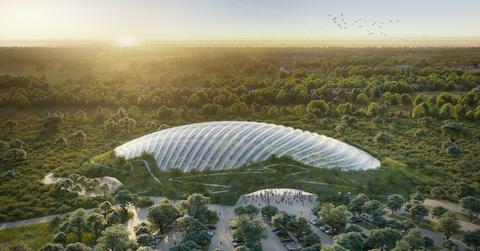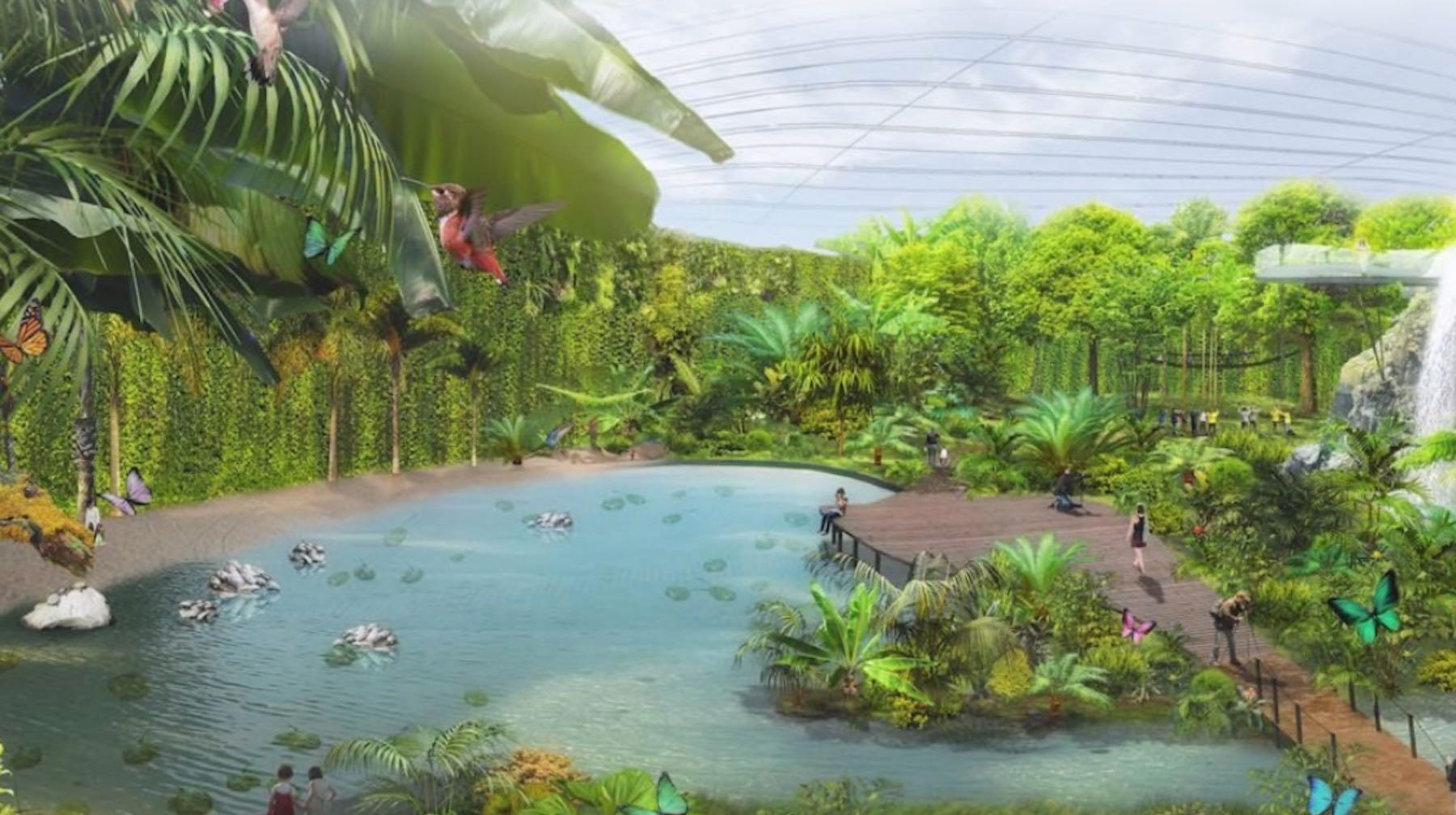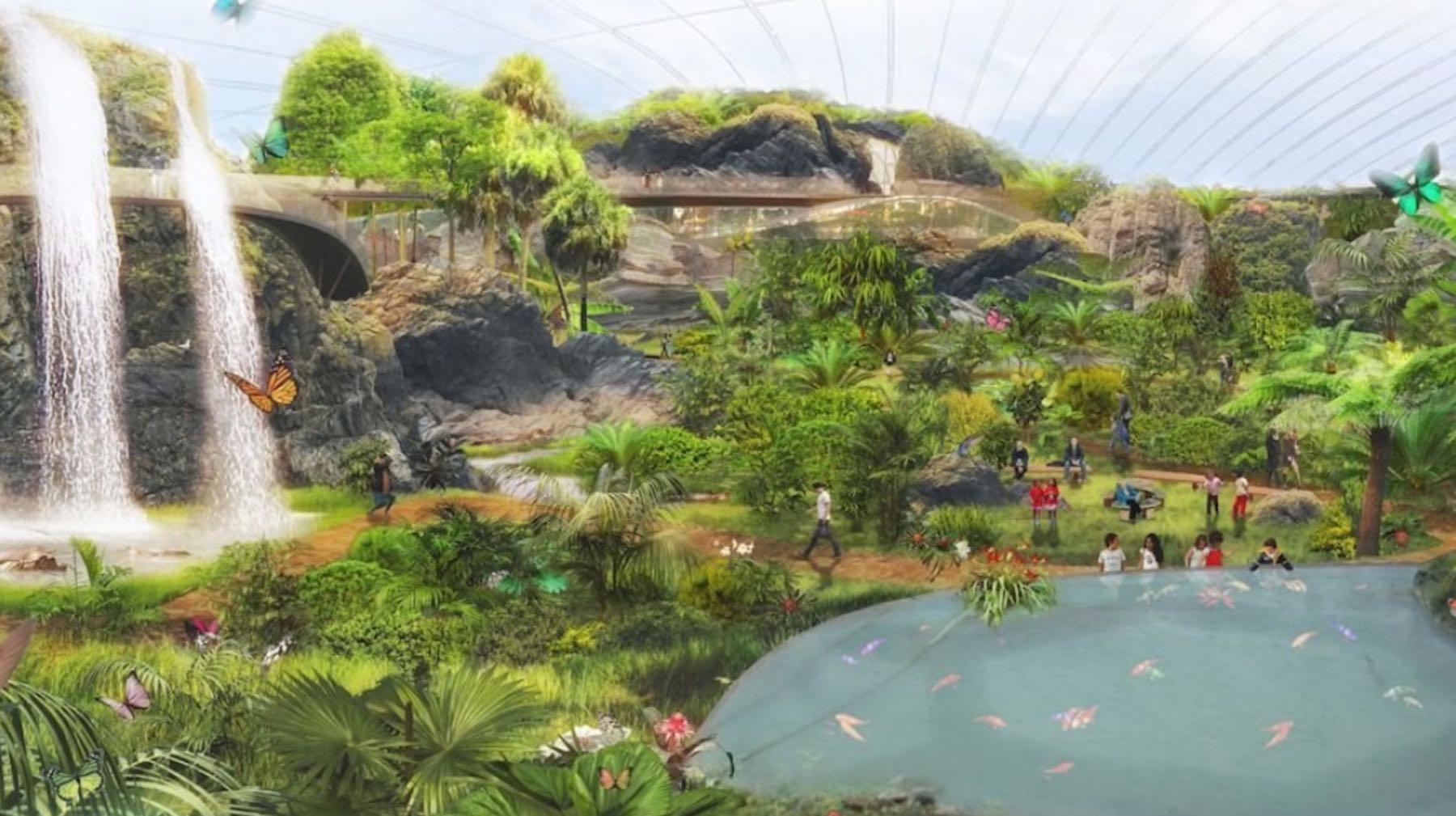France Is Building The World's Largest Single-Dome Greenhouse
The energy-efficient dome offers a piece of the Amazon in the middle of France, and you can even rent a room to stay there for a visit.
Updated May 21 2019, 4:52 p.m. ET
A design for the world's largest single-dome greenhouse has just been announced for France's Pas-de-Calais. Called Tropicalia, the greenhouse will be approximately 215,000 square feet, and be filled with waterfalls, lush greenery, wildlife, and tropical plants, Inhabitat reports. The dome will be double-insulated, for energy efficiency. The entire $62 million project has been conceptualized with energy in mind, with built-in features like heat recycling.
The design comes from Coldefy & Associates in partnership with energy company Dalkia, and both groups are flexing their abilities with this project.
“Tropicalia was imagined by Coldefy as a ‘bubble of harmony’ perfectly integrated with the local environment, endowed with a new innovation: the project is autonomous – energy producer by the use of a double dome creating a air chamber heated by a greenhouse effect,” explained the architects.
Plans for the interior included a long walkway, an 82-foot waterfall, Amazonian fish, and birds. The structure itself will be partially embedded in the earth, which acts as a natural insulator for the space, which will always be kept at a a stable 79-degrees, no matter the season. The designers suggest that excess temperature generated by the dome could be siphoned off for other nearby buildings.
Denis Bobillier, the Technical Director of Major Projects at Dalkia told Arch Daily, "This double insulating dome will protect the tropical ecosystem in summer and maintain its temperature in winter. The partial burial of the greenhouse will reinforce this insulation. The excess heat can therefore be directly used, stored or redistributed to our neighbors as part of a network of private heat or a 'smartgrid.'"
The dome itself will be built from structural steel and ETFE plastic, which has a high corrosion resistance rate. And it certainly needs to cover a lot of space.
In addition to the wildlife, the architects are promising a space that includes an auditorium, a restaurant, a bed and breakfast if you want to move in for a few days, as well as a research area with a conference room, laboratory, and clinic. You could really live there, even if you're not a beautiful tropical bird. They'll just be your neighbors.



